Passion. Pride. Promise. Two Leaders Help Pave the Way for Their Students & Communities

Glassy telltale signs of emotion show that this isn’t just work. It’s personal. Tears well at the joy and pride for feeling supported, for their personal growth, for a most memorable student, for the hope of the future.
Tucked away in the hills of rural western Oregon, the Vernonia and Gaston school districts defy many of the stereotypes of rural schools. Their communities face both common and unique challenges. Despite limited funding and lagging community access, they forge ahead with modernization and tech integration; despite living in regions more susceptible to natural disasters, they continue to stand united and rebuild and innovate; despite limited housing and big-city resources that result in staffing challenges, they remain creative and committed to ensuring their students are supported. Still, their leaders are guided by a singular purpose that holds true for all districts: that all of their students have equitable access to options and opportunities, and that they’re prepared for successful futures.
Vernonia: Building Bridges, Clearing Paths
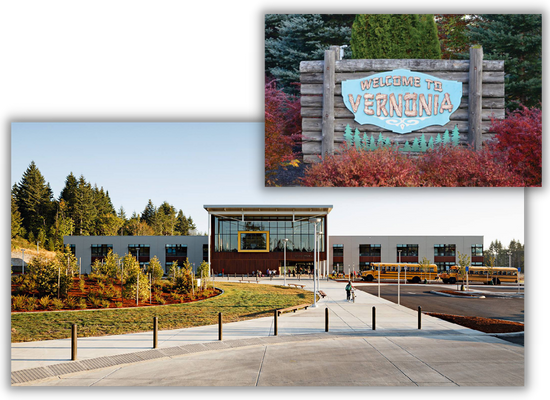
Elementary principal, Michelle Eagleson, guides us through the halls, classrooms, and grounds; her enthusiastic pride in both her school’s and community’s rich history is infectious, and we can’t get enough of the stories. Tales of pioneers and settlers, of the symbiotic relationship with nature as the logging industry boomed, of resilience and rebirth after two devastating once-in-a-century floods swept through the town within eleven years of each other and resulted in the building of a new school in 2012 made possible with community and state support. However, none of this compares to the joy she expresses when speaking about the students – made bittersweet only because she’s not in the classroom all the time, but this doesn’t keep her from still staying connected and busting out those kindergarten teacher skills to build relationships through warmth and silliness and song.
Community pride keeps her and the rest of Vernonia connected and moving forward. It’d be easy to think that school culture work isn’t a necessity, but it’s the foundation that makes for a strong, unshakable community. Michelle explains that they began their maxims work with Portico just before the COVID pandemic, and then “The pandemic happened and then it was like, ‘Oh, we’re at a standstill.’ But what was determined was building bridges, clearing paths. What’s great about that is we’re a logging community, [and] we’ve overcome two devastating floods. So we’ve had a lot of work to do to build bridges with our community, bring in families who struggle, maybe aren’t comfortable being in our school, finding ways to make them feel comfortable, and then finding ways to make sure that all of our kids can be successful. So it really speaks to who we are as a community.”
Honoring the past doesn’t mean staying stuck in it; it’s this pride in their journey that propels this community into the future. Everywhere, there are reminders of their history, of their story: class photographs dating back to the early 20th century, showing ancestors of current staff and students, welcome you in the lobby; a timeline of trophy cases lines the hall to the cafeteria; pieces of the old school buildings seamlessly integrate into modern spaces outfitted with the latest tech.
In the lower level halls, blue and yellow handprints of the last decade of graduates mark the beginning of new enduring traditions. Michelle lays her hand against theirs as she walks the hall. She excitedly points out her former students and tells us their stories as students and now as adults, some of who she still sees at school in their new roles as staff or parents. Theirs is a story that continues to develop and evolve, yet it remains anchored in their communal identity. When a passing high school student is asked what a movie about his school should be called, he simply says, “Logger Pride.”
As I thought about rolling out things for this upcoming school year, talking to my staff about the culture . . . And so thinking about How do we get our families to feel welcome? How do we get them involved? How do we really build those bridges? Make them feel comfortable? . . . How do we take the obstacles out of the way and clear the path? Because everybody’s got obstacles in the way. And so, we’re just trying to clear all those things away and focus and help kids reach their potentials.
Michelle Eagleson
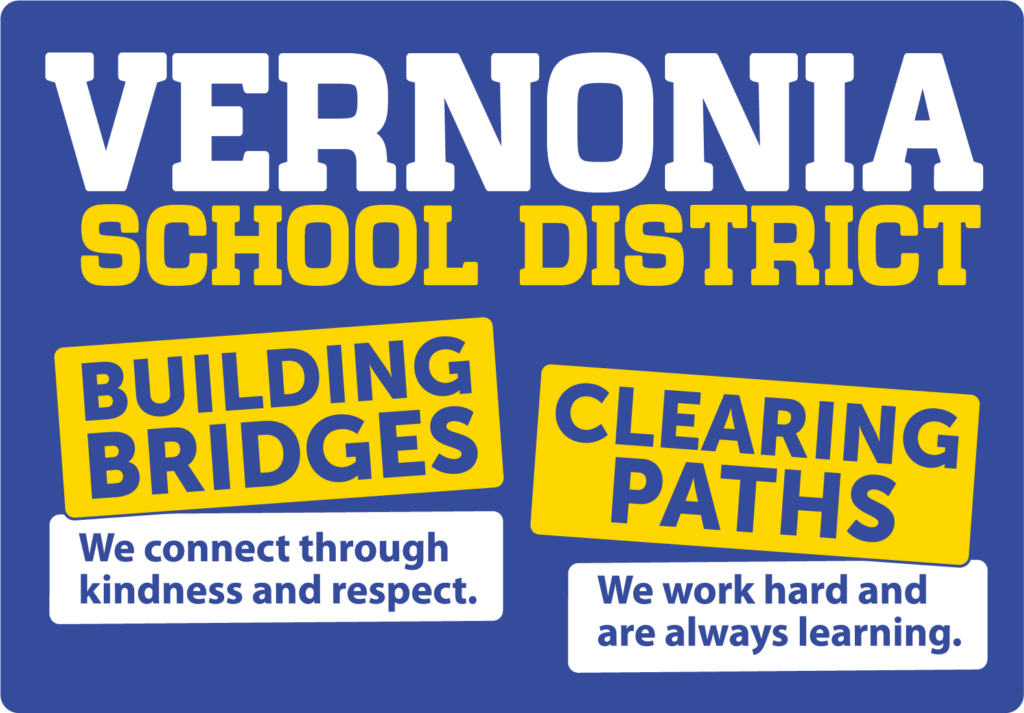
Michelle shares that getting everyone on board with a shared culture is crucial for students’ sense of belonging and engagement with school, and that this year there’s a noticeable increase in smiling faces and energized staff. She credits this to the entire staff “intentionally focusing on the culture, making people feel great when they come to school. And our superintendent has said, ‘We do not walk down this hallway without saying hello to a person. Whoever you are, you say hello to them.’ Like this is our place. We’re going to make people feel welcome because, again, it’s tying back to [our maxims]. We’re building those bridges and clearing paths.” For instance, when a “Meet the Teachers” middle school event drew in only one family, the fateful evening was lovingly dubbed “Meet the Family,” and this experience prompted the Vernonia staff to rethink their approach and create a “Meet the Families” event where the focus was on getting to know their students and families while enjoying a school-provided barbecue dinner. And this event didn’t require a name change.
When people feel welcome, they’re more likely to work with you and do those things that we really want for our kids.
– Michelle Eagleson, Vernonia Elementary School Principal
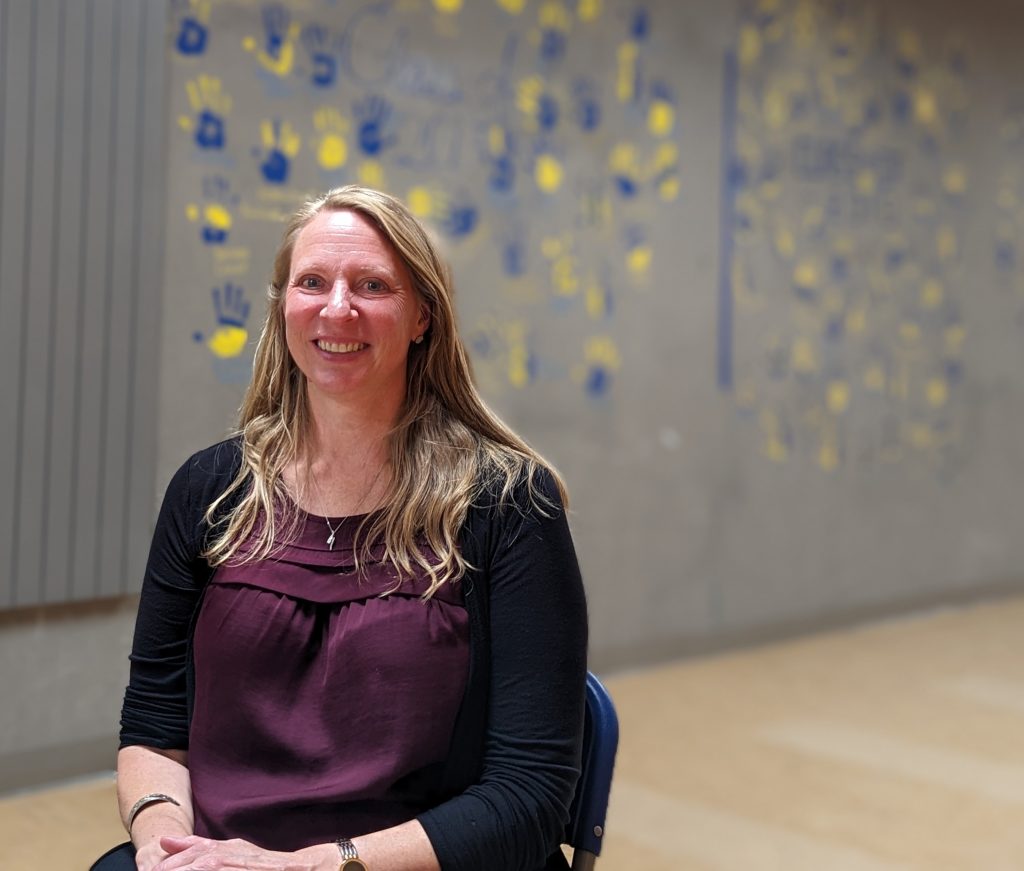
Working with Portico and an expanded network of other rural school leaders has helped Michelle hone her skills as a new administrator as well as focus on and get busy on the right stuff. And for her, the right stuff is what keeps her up at night – which, of course, are her students: “When I see kids not being successful. Like, how can we get them to learn? What strategy can I put into place? Because I want all my kids to love school. I want them to be able to be successful. So, sometimes, it’s like, what other resources could we have? [Or] how can I get this or get that? Or What can I do so that student gets what they need? I think trying to make sure that we’re meeting the needs of all kids and my staff is what keeps me up at night. With guidance from her coach Joann, Michelle feels more confident in getting these questions answered and getting some much-needed sleep in the process.
For Michelle, everything she does as a leader is guided by whether or not it helps or hinders students’ options and opportunities for success. “I think it’s just they’re successful and whatever path they choose, whether they choose to go into the workforce, whether they want to go like military, they want to go into a profession. I just want them all to be successful, and I want them to be able to give back and make sure that we just continue the cycle of every kid getting what they need and whatever that path is that they feel supported. I think success is what we want for all of our kids, whatever that looks like.”
If it’s not helping, then it’s not worthwhile. It’s really that simple. The promise of a hopeful future that students are actually prepared for is one Vernonia is committed to keeping.
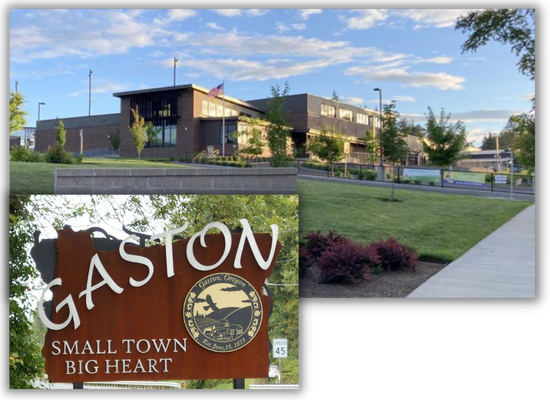
Gaston: A Community United by Identity
Given her dedication and passion for her community, you’d never suspect that superintendent Summer Catino isn’t a Gaston native. What started as a temporary substitute teaching position turned into a 17-year teaching career, then principalship, and now its superintendent. Despite admitting she really didn’t want to go into administration or leave the classroom (she ended up loving it), she never wavered in knowing Gaston was her community.
“I just loved it here. The small school atmosphere, the tight-knit community, it just really felt good . . . and I’ve just stayed here because I love it here. I eventually moved here; it became my community where I live, and I know the students – I know the families. It’s a great place to be.”
Of course there are downsides to educating a small community, but Summer’s community pride keeps her focused on the positive: “One of the things that I love is just that we are the smallest school district in Washington County. So when you think of Washington County, you think of much bigger schools. We are small and rural. We have less than 500 students. So we know each student very well. We’re a tiny community. There’s just a few businesses here in town, and we know one another really well. It’s just it’s a great place to be.”
But being the smallest district (by far) in the county still poses challenges when it comes to leadership support and professional development. Because while there are of course universal best practices among her peers from large districts like Beaverton and Hillsboro, there are some key differences in supporting a small community. And whether it’s among her peers or other communities at large, a lot of small-town stereotypes still persist, especially when it comes to education. “[A] misconception I think, for a rural school is just people thinking that there aren’t opportunities here. They’re just different opportunities. They might not look the same as a larger school, but we still have tons of opportunities for our students: ways for them to excel in advanced coursework, to get college credit, to learn about CTE coursework.” Summer has been grateful to connect herself and her leaders with both the coaches and the vast network the Portico community provides, especially with other rural school leaders who can better empathize and strategize around their unique circumstances.
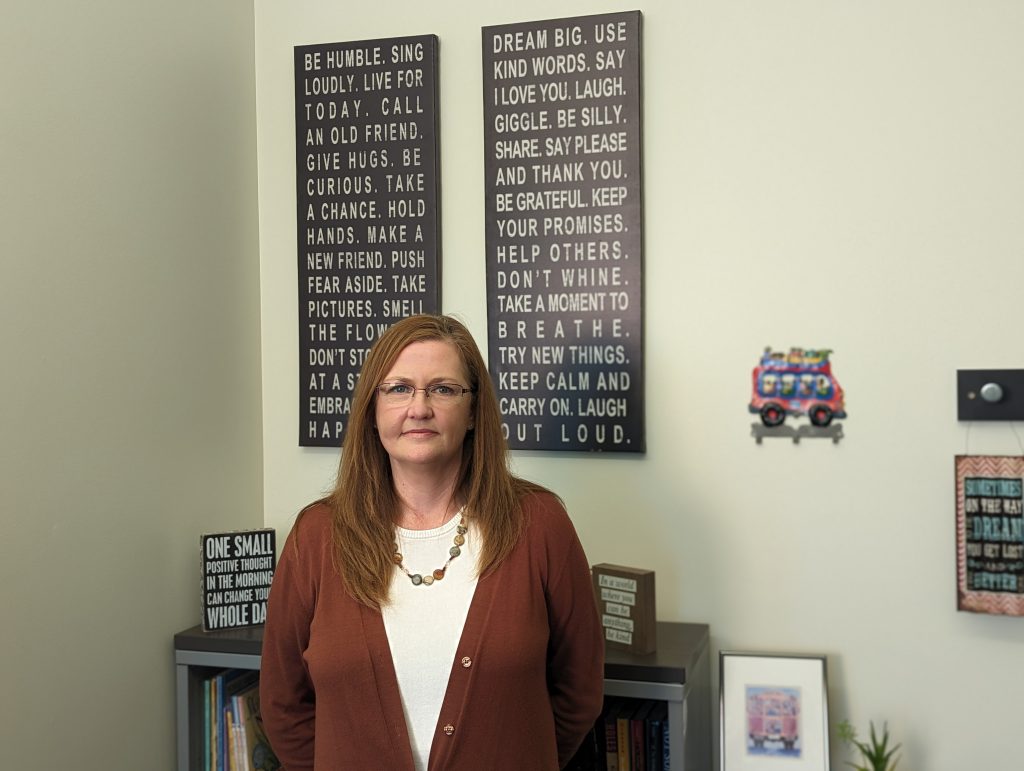
Community needs to be able to depend on people to come together, to know one another, to know your positives and negatives, but to be able to come back and work for a common goal and to support one another.
– Summer Catino, Gaston Superintendent
But Summer can’t emphasize enough that they are committed to keeping the promise of options and opportunities for their students, and these options and opportunities are not limited because of the size of the district. Gaston’s robust CTE program directly connects students with local businesses as well as extended learning and career opportunities throughout the state.
I want them to have all of those opportunities. And so, just trying to be very intentional about how we do our work so that that they can have maybe not as many opportunities as some of the larger schools, but to have opportunities that fit them and their personalities.
Summer Catino
One such program fuses math with construction. It took a few years to get everything setup and everyone trained, so “last year was the first year we were able to implement it, and now we’ve even expanded it more. But it’s just it’s amazing. They learn how to use math within construction. And this last year they built sheds and there was an online bidding war over these sheds. And so they then went to the winning bid site, and they built the shed. People were watching and there were people already asking, Can you make us one? So, it was a way for them to start to finish, not only learn the math, learn the construction, but also learn the business side of it and being customer service oriented and then being paid for their work. It was it was amazing.”
When you have pride in your community, you have pride in yourself. Using their maxims as the basis of conversations about everything from behavior, to actions in and out of school, to academics, to interpersonal relationships helps keep everyone focused on their role as a part of the community. Gaston students feel valued and respected, and this has resulted in improved behaviors and relationships built upon respect and trust.
This transformation didn’t happen overnight, but with Portico’s support and guidance, they’ve been able to make fast work of community development and student success. “I think the coaching at the Junior-Senior High has been really valuable because Jesse was coming in as a new principal and really he’s had to build a program there. And seeing last year to this year where he has implemented his maxims and gotten everyone on board, students, staff, community, just talking about who are we at Gaston and who are our students at the Junior-Senior High. And just such a positive atmosphere starting the school year and seeing him talk with students and be able to connect their behaviors with those maxims, to say, ‘Wow, you are being so resilient,’ or ‘I love the way you connected and you show care for your community.’”
One of their most remarkable successes is that Gaston’s maxims aren’t confined to the campus. Already, local businesses post signs of them, and there are plans for further community integration. When you bring the community together to decide what it stands for and what its members commit to reinforcing within the community, then you don’t even have to “sell” the idea of reinforcing these values and holding kids accountable. Businesses that work with and employ Gaston students feel confident in speaking this shared language and holding everyone accountable, and students know what’s expected of them in and out of school, so they’re better set for success in all areas of their lives.
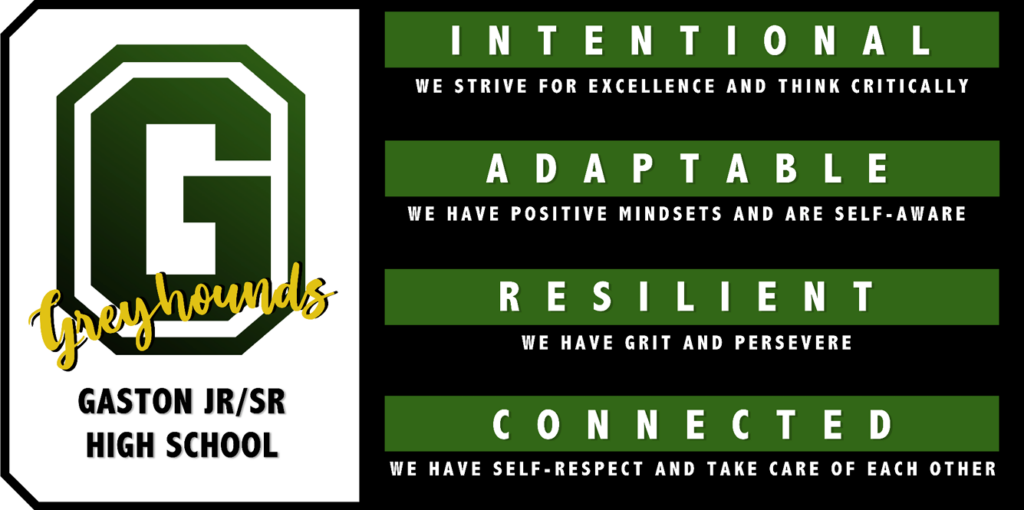
“I want kids to leave here being successful and ready to jump into college and careers, to be able to show that they have the maxims that Jesse and his staff put together, that being connected, being resilient, being intentional. Those are all really important things. I want kids and Gaston to have lots of opportunities. It’s a small place, but we need to still provide a lot of different opportunities for our kids, whether it be in CTE, advanced coursework, AP classes.”
Small Community Commitment to Greatness
The communities of Vernonia and Gaston are geographically small, but their kids are still afforded opportunities for greatness. They know that honoring and learning from their past helps them better prepare future generations for success. And with steadfast leaders dedicated to not only their schools, but their communities as a whole, we have no doubt that their names won’t be passed up for long.
TOOLKIT RESOURCES
FOR A STRONG SCHOOL IDENTITY
Toolkit is Portico’s free public library of grab-and-go resources that help you to focus more time on transforming learning to be relevant for all. We add new items at least twice a month, so be sure to check back in periodically.
Click the links below to start saving yourself time and get stuff done.
- If Your School Was an Animal: Understanding & Visualizing School Identity
- Envision the Future of Your School’s Identity: Develop a Shared Understanding of Your School’s Identity
- Discover Your School’s Identity: Rate Your School’s Identity With Your School Leadership Team & Teachers
- PORTICO BLOG: 6 Tips To Manage Schools Through A Disaster









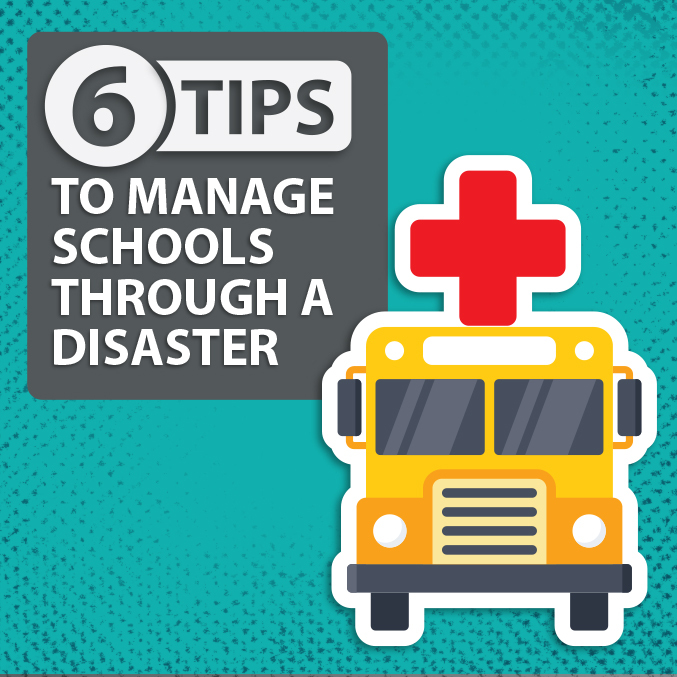
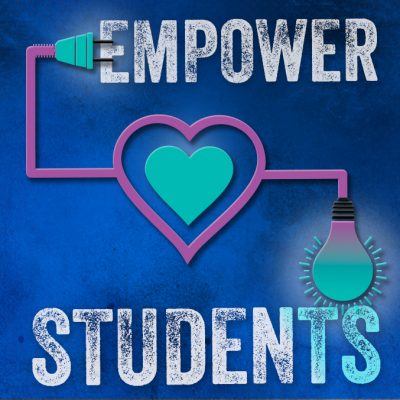
Responses